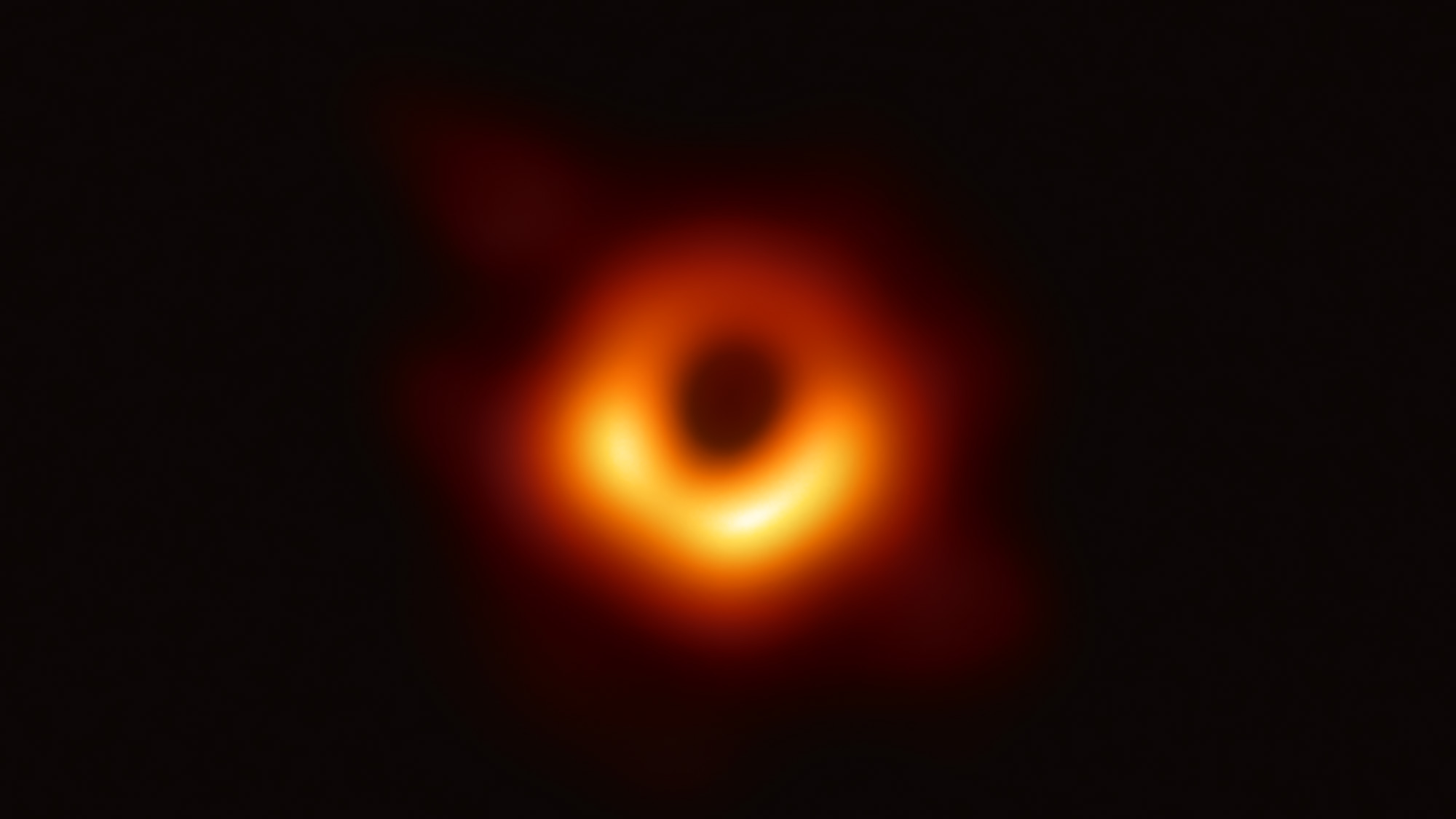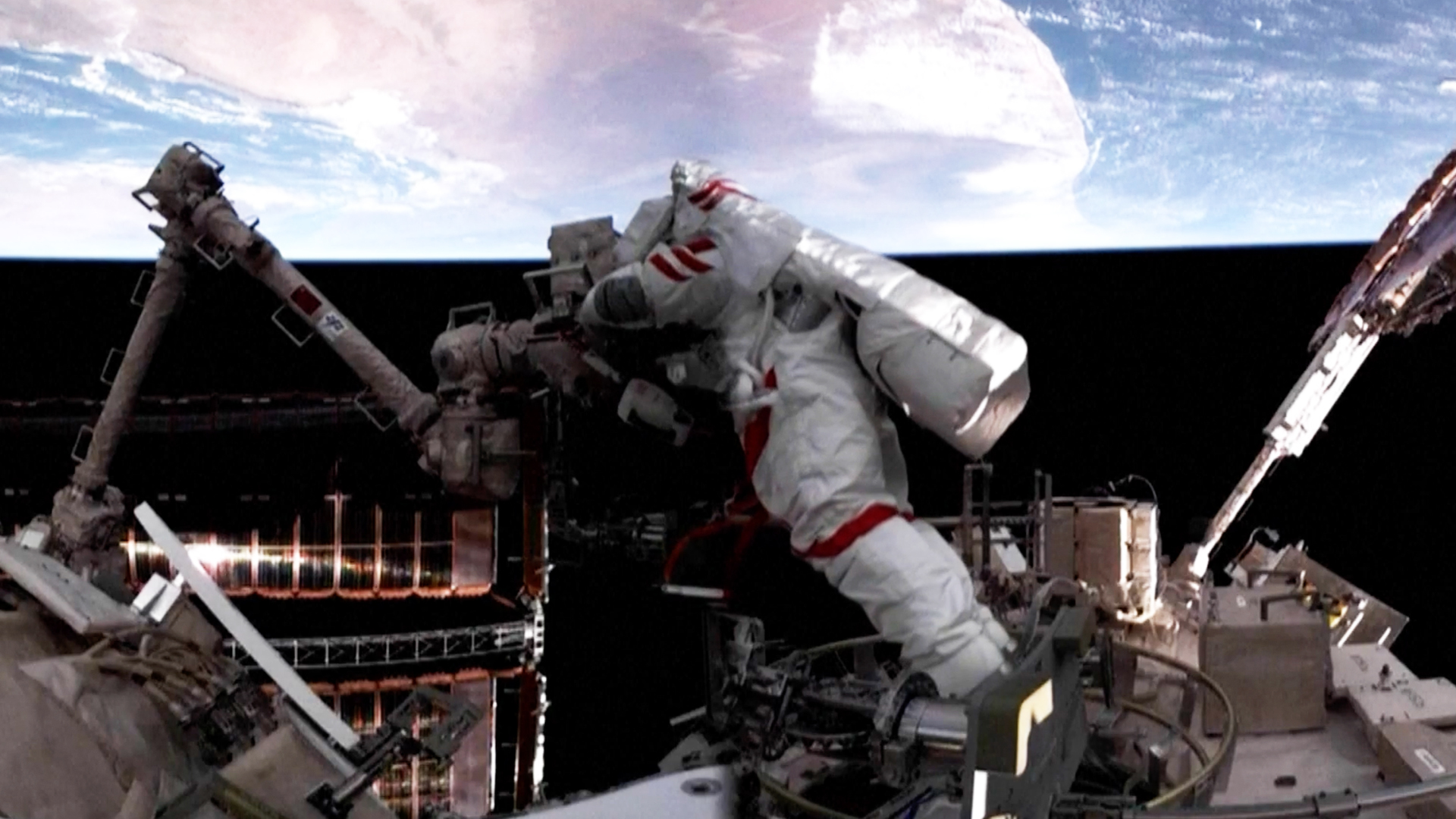'Infinite subrings' may be next frontier for photographing black holes

Black-hole photography could be even more powerful and revelatory than scientists had thought.
Last April, the Event Horizon Telescope (EHT) project unveiled the first-ever imagery of a black hole, laying bare the supermassive monster at the heart of the galaxy M87. The landmark photos have opened new doors, allowing scientists to probe exotic space-time realms like never before.
And that probing may go much deeper still in the not-too-distant future. The most prominent feature in the EHT imagery, a bright but unresolved ring around M87's supermassive black hole, likely contains a thin "photon ring" that is composed of an infinite sequence of subrings, a new study reports.
Related: Historic first images of a black hole show Einstein was right (again)
The intricate structure of this photon ring holds a treasure trove of information about the black hole — information that scientists can access by extending the EHT's reach a bit, study team members said.
"Black holes are giving us this gift, this signal unlike anything that's been studied in astronomy," said lead author Michael Johnson, an astrophysicist at the Harvard-Smithsonian Center for Astrophysics in Cambridge, Massachusetts.
"It's not just some cheap picture of, 'We understand black holes better,'" Johnson told Space.com. "It's actually enabling a whole new way to measure them."
Breaking space news, the latest updates on rocket launches, skywatching events and more!
Put a ring on it
The EHT is a network of eight radio telescopes around the world, which are linked to form a virtual instrument the size of Earth — a technique known as very-long-baseline interferometry (VLBI).
This megascope has been observing two supermassive black holes. One is the M87 beast, which lies 53.5 million light-years from Earth and is about 6.5 billion times more massive than Earth's sun. The other is the Milky Way's central black hole, known as Sagittarius A*, which is 26,000 light-years away and harbors "only" 4.3 million solar masses.
The EHT team looked first at M87's black hole, which is a bit easier to resolve because it's less variable over short timescales. The project hopes to get imagery of Sagittarius A* soon as well, EHT team members have said.
Such imagery doesn't depict the interior of a black hole, of course; that's impossible to pull off without being inside a black hole, because these objects gobble up light. Rather, the EHT provides a silhouette of the black hole, mapping out its event horizon, the point of no return beyond which nothing can escape.
The EHT imagery shows that the silhouette of the M87 black hole is surrounded by a bright ring of emission — photons shot out by the hot, fast-moving plasma swirling around the supermassive object. In the new study, Johnson and his colleagues suggest that this ring is a rich resource for astronomers to mine.
Einstein's theory of general relativity predicts that embedded within the emission halo is a "photon ring," which itself consists of a complex nest of infinite subrings, the researchers determined.
"Together, the set of subrings are akin to the frames of a movie, capturing the history of the visible universe as seen from the black hole," Johnson and his colleagues wrote in the new paper, which was published online today (March 18) in the journal Science Advances.
Watching that "movie" could reveal key but elusive insights about black holes and the nature of gravity, the researchers said. For example, characterizing the subrings in detail could help scientists nail down a black hole's mass and spin, the two properties that define these exotic objects.
"Once you know these two parameters about the system, we think you know everything there is to know about the black hole," Johnson said.
EHT observations currently allow calculation of black hole masses within 10% or so of the actual value, he added, and they don't reveal much about spin. But taking the project off Earth could change things significantly.
Related: Images: Black holes of the universe
A telescope bigger than Earth
The EHT consortium, an international team of about 200 researchers, has long planned to push the array into the final frontier eventually, provided their funding will allow it. After all, bigger telescopes, including those linked via VLBI, are more powerful.
But this prospect has long seemed daunting, as calculations have indicated it would take at least half a dozen space-based components to appreciably improve the EHT's resolving power, Johnson said.
The new study, however, suggests that reading the subrings won't require such a significant outlay of resources. The researchers determined that even a single satellite — or just one properly designed instrument aboard a parent spacecraft — would likely do the trick, provided it extended the EHT's footprint far enough out into space.
"Even, say, at geosynchronous orbit — that's a big resolution improvement for the EHT," Johnson said, referring to the swath of space about 22,200 miles (35,730 kilometers) above Earth's surface. "And then, certainly, once you get out to the moon — that's where I think we would really be looking at entirely new science."
The subring signatures should be quite easy for a properly extended EHT to measure, he added.
"They seem almost magical," Johnson said. "We went from this situation where it was sort of unimaginable to even increase the resolution of EHT images by a factor of two. And now we're thinking, by adding a single space-based line that's very long, we might be able to increase EHT resolution by a factor of 100."
This potential milestone isn't just around the corner, but it may not be too far off, either; Johnson said that the EHT could get a space component within 10 years or so, if everything breaks the project's way.
- This huge black hole is spinning at half the speed of light!
- Event Horizon Telescope team wins $3 million Breakthrough Prize for epic black hole imagery
- 8 baffling astronomy mysteries
Mike Wall is the author of "Out There" (Grand Central Publishing, 2018; illustrated by Karl Tate), a book about the search for alien life. Follow him on Twitter @michaeldwall. Follow us on Twitter @Spacedotcom or Facebook.
OFFER: Save at least 56% with our latest magazine deal!
All About Space magazine takes you on an awe-inspiring journey through our solar system and beyond, from the amazing technology and spacecraft that enables humanity to venture into orbit, to the complexities of space science.

Michael Wall is a Senior Space Writer with Space.com and joined the team in 2010. He primarily covers exoplanets, spaceflight and military space, but has been known to dabble in the space art beat. His book about the search for alien life, "Out There," was published on Nov. 13, 2018. Before becoming a science writer, Michael worked as a herpetologist and wildlife biologist. He has a Ph.D. in evolutionary biology from the University of Sydney, Australia, a bachelor's degree from the University of Arizona, and a graduate certificate in science writing from the University of California, Santa Cruz. To find out what his latest project is, you can follow Michael on Twitter.

